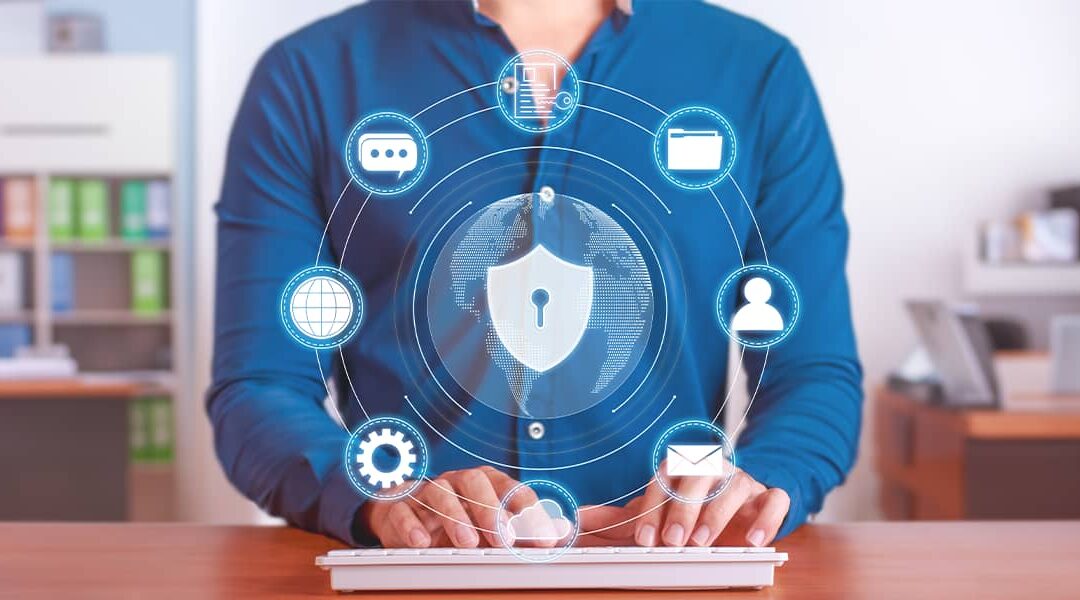Every organization must be invested in its own cybersecurity. This is a simple truth in a world where millions of data breaches happen every quarter of the year. They will never go away as long as we use technology and as long as there are bad actors who want to steal your information. Therefore, cybersecurity is a 24/7 job, demanding constant vigilance and an evolving approach to defend against a constantly changing threat landscape. Cybersecurity documentation is the anchor for comprehensive strategies, offering a roadmap for preventing, detecting, and responding to digital threats effectively.
Understanding and implementing effective cybersecurity documentation can seem daunting, but it is imperative for small and medium businesses (SMBs) where cybersecurity is a priority. This blog will show you the essential components and steps required to develop and maintain effective cybersecurity documentation, empowering SMB owners and IT teams to enhance their cybersecurity and improve their business resilience.
So, let’s take a closer look.
Understanding Cybersecurity Documentation
At its core, cybersecurity documentation is a collection of written materials that detail your organization’s cybersecurity policies, procedures, and practices. It includes many documents which, together, build a comprehensive framework to protect your assets.
These documents serve as a guide for decision-making processes, security protocols, and help in the management of cybersecurity risks.
The key components of cybersecurity documentation include:
- Cybersecurity Policies: These are high-level documents that set out an organization’s overall approach to cybersecurity. They define the management’s intentions and set the strategic direction for security efforts. These policies establish guidelines for acceptable use of IT systems, data management, and the responsibilities of employees and management in maintaining security.
- Cybersecurity Procedures: Procedures break down the policies into executable actions. They are step-by-step instructions that must be followed to maintain security in daily operations. This usually includes processes for secure system configurations, password management, and regular maintenance activities like patch management and backups.
- Incident Response Plans: Perhaps one of the most critical segments of cybersecurity documentation, these plans outline what needs to be done in the event of a security breach or incident. They detail response strategies, including who should be involved, how to contain the breach, and the steps to take for recovery and communication both internally and externally.
- Security Standards and Frameworks: These documents enumerate the specific technical standards and best practices adopted by the organization to secure its systems and data. They may align with international standards like ISO 27001 or industry-specific frameworks such as the Payment Card Industry Data Security Standard (PCI DSS).

Cybersecurity documentation is now a crucial aspect of risk management.
The function of cybersecurity documentation extends beyond recording procedures and policies. It plays a role in the foundational business strategy and aligns IT security with the overall direction of a company. It acts as a communication tool that conveys security expectations to all stakeholders, including employees, partners, and even customers.
Effective documentation is dynamic. It should evolve with the business and the ever-changing nature of cyber threats. Finally, it also serves as a touchstone during audits, demonstrating a commitment to due diligence and ongoing efforts to secure information.
Later on, we will discuss how to design, manage, and use these documents to strengthen your organization’s defense against threat actors and to ensure your business strategy reflects the needs of an organization in the modern landscape.
The Importance of Cybersecurity Documentation
Cybersecurity documentation will serve as an anchor and stabilizing force whenever you need it. Here are just some of the reasons and places where cybersecurity documentation will improve your organization’s security posture and stability.
Risk Management
Effective risk management is critical to the ongoing security and viability of any business in the digital age.
Cybersecurity documentation provides the framework for identifying threats, assessing the likelihood and impact of these risks, and defining the measures needed to mitigate them.
With well-established documentation put in place, you will know every member of the team understands their roles and responsibilities in maintaining security controls. Also, decision-makers are equipped with the information they need to prioritize and address vulnerabilities in a timely and efficient manner.
Compliance and Legal Stipulations
In our increasingly regulated world, compliance with industry and legal standards is a must. Cybersecurity documentation demonstrates your company’s compliance with these regulations, which can vary from industry to industry.
For example, businesses handling credit card information must adhere to PCI DSS standards. Healthcare sectors must comply with regulations such as HIPAA.
Proper documentation shows regulators and clients alike that your organization takes its cybersecurity responsibilities seriously, following established protocols and procedures that align with statutory and industry-specific requirements.
Insurance Implications
When it comes to cyber insurance, documentation can significantly affect the success of a claim. Before granting a policy, insurers are scrutinizing applicants’ posture like never before. They may require a robust set of cybersecurity documentation to assess the level of risk and determine coverage terms.
In the event of an incident, well-kept and thorough documentation can quicken the claims process and provide clear evidence that the organization had appropriate security measures prior to the event. Without such documentation, claims may be delayed or denied, leaving the business to shoulder the financial burden of recovery on its own.
Cybersecurity documentation is far more than a mere administrative exercise. It’s a critical component of a strategic approach to cybersecurity.
How to Manage Your Cybersecurity Documentation
Implementing cybersecurity documentation practices is essential. Not only to satisfy regulators, but also to protect your corporate assets. The following steps outline an approach to managing documentation effectively.
Step 1: Planning and Organization
Setting documentation goals and the span of coverage. Begin by defining clear objectives for your cybersecurity documentation. Consider what you want to achieve—whether it’s regulatory compliance, enhanced security posture, or both. Decide the scope of your documentation, and make sure it covers all necessary aspects of your cybersecurity environment.

Developing documentation proves your organization’s commitment to cybersecurity.
Selecting vital documentation specific to your business. Not all documentation serves every business equally. Look at your business model, regulatory requirements, and specific risk profiles to determine which documents are crucial for your organization. This may include policies on data protection, incident response plans, or user access controls.
Step 2: Develop the Documentation
Crafting effective policies and procedures starts with understanding the threats specific to your industry. These documents should be precise, actionable, and accessible to all employees. Use clear, jargon-free language so everyone who needs to understand them does.
How to make your documents clear:
- Employ structured formats and bullet points.
- Use diagrams and flowcharts where possible to visualize complex processes.
- Consider translations for non-native English speakers within your company.
Using Documentation Tools:
A note on software and tools: Leverage documentation management systems that offer version control, access logs, and collaboration features. These tools enhance the efficiency and accuracy of document creation and maintenance.
Examples of tools that can support maintenance and compliance checks. Platforms like Microsoft SharePoint and documentation-specific solutions can be valuable in maintaining an organized cybersecurity documentation suite.
Step 3: Review and Approval
The importance of cross-team checks for precision and adherence to regulations. Engage your stakeholders, including cybersecurity, legal, and compliance teams, in reviewing the documentation. This gives all concerned parties a say in what the documents say and how policies and regulations should be followed.
Regular updates to pace with evolving threats. Cybersecurity landscapes and business models evolve. Regularly revise and update your documentation to reflect these changes to keep them relevant and effective.

Involve your team in developing cybersecurity documentation. They will have helpful insights to offer.
Step 4: Implementation and Instruction
Ways to initiate cybersecurity policies. Implementation involves mapping policies to real-world controls and practices within your IT infrastructure. This may mean adjusting configurations, deploying new security tools, or enhancing monitoring capabilities.
Creating educational initiatives for company-wide cybersecurity policy adherence and understanding.
Develop training programs for different roles within your organization to garner adherence to the policies. Use engaging content and real-world scenarios to highlight the importance and practical application of these policies.
Step 5: Routine Revisions and Management
Evaluation and refreshes are essential.
Cyber threats are always changing, so your cybersecurity documentation must keep up. Schedule periodic audits and address areas that may have become outdated or no longer compliant with current best practices and regulations.
Seek employee feedback, too.
Incorporate feedback from employees who regularly interact with cybersecurity processes. Their insights can reveal practical challenges and areas for improvement. Adjustments should also reflect the things you learn from cybersecurity audits and changes in industry regulations.
The Key Stakeholders in Cybersecurity Documentation
Cybersecurity documentation is a multidisciplinary effort that involves various roles, so all these voices are valuable. These personnel include, but are not limited to:
- IT staff, who are on the front lines. They implement and manage cybersecurity practices detailed in the documentation.
- Top-level management plays a crucial role in selecting and enforcing these policies. They must demonstrate a commitment to cybersecurity throughout the organization.
- Legal consultants should be involved. They will help to verify that the documentation complies with relevant laws and regulations.
Safeguarding Your Digital Frontier
Not only does meticulous documentation act as a linchpin for managing insurance claims effectively, but it also serves as demonstrable evidence of a company’s commitment to cybersecurity best practices. By establishing and following your cybersecurity documentation, businesses can markedly enhance their security posture and resilience against cyber threats.
As the cyber threat landscape continues to change, Innovative Integration urges businesses to elevate their cybersecurity documentation from a routine administrative task to a cornerstone of their cybersecurity strategy. Prioritizing this aspect of your cybersecurity framework earns you not just enhanced protection but also a badge of diligence and responsibility in the eyes of insurers, regulatory bodies, and, most importantly, your clients.




